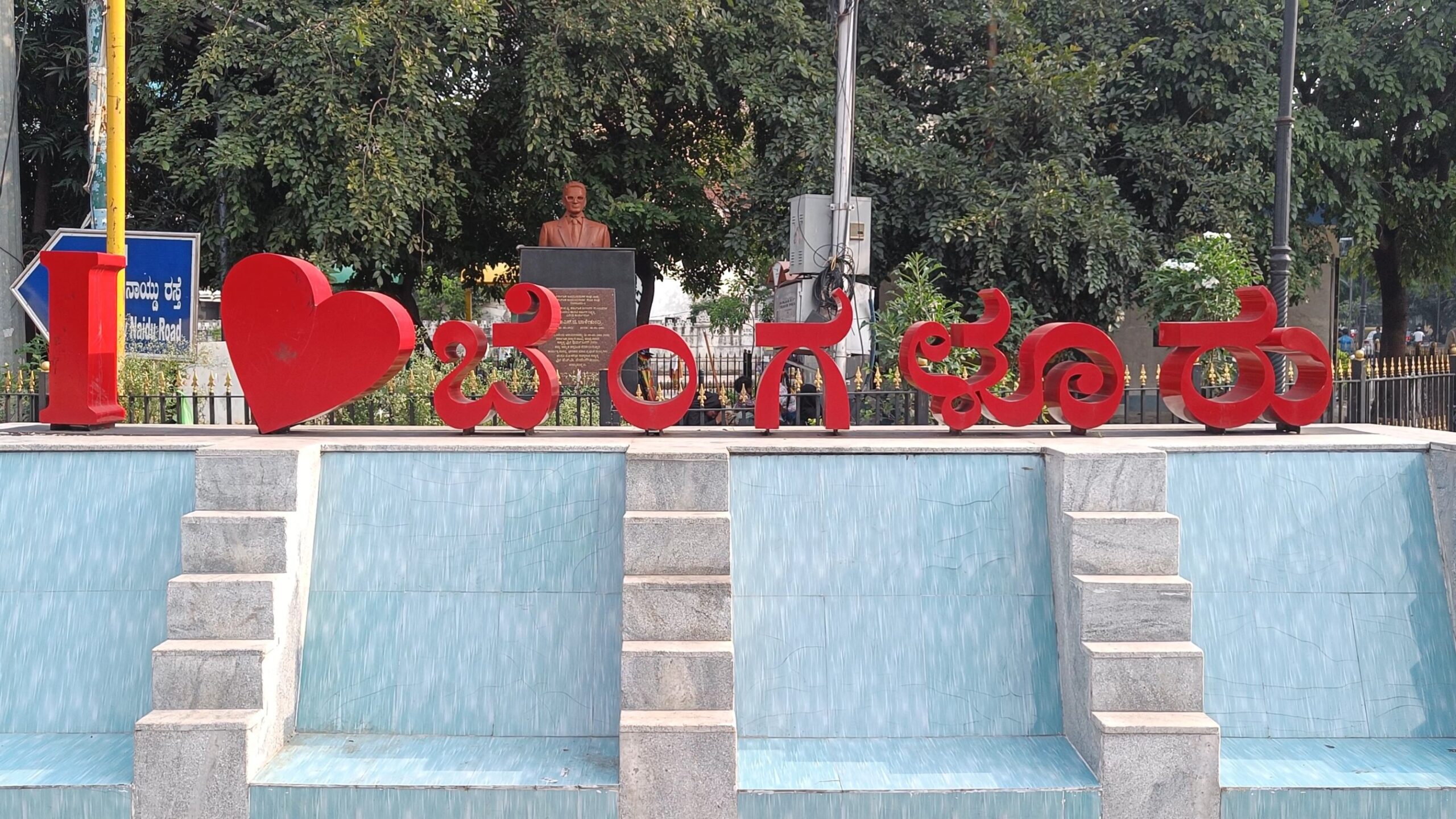Place names in Bengaluru tell a story of their journey, from ancient settlements to their current status as a dynamic urban centre.
Published Nov 19, 2024 | 8:55 AM ⚊ Updated Nov 23, 2024 | 6:42 PM

Bengaluru has a rich origins and stories behind their names. (South First)
Bengaluru, hailed as the “Silicon Valley of India,” has evolved rapidly but has deep historical roots.
The names of its streets, neighbourhoods, and landmarks offer a glimpse into the diverse cultures, traditions, and influences that have shaped this bustling metropolis.
Originally known as Bangalore, the city owes its name to the Kannada phrase benda kaalu ooru, meaning, “the town of boiled beans.”
According to folklore, 12th-century Hoysala king Veera Ballala II lost his way in the forest and was offered boiled beans by an old woman. Grateful for the gesture, he named the place Benda Kaalu Ooru.
This simple, yet profound name was later anglicized to “Bangalore” but was restored to its original form, Bengaluru, in 2006.
However, evidence suggests that the name’s origin predates this legend. Historical records show that the city was referred to as Bengaluru as early as the 9th century in inscriptions found at the Nageshwara Temple in present-day Begur, a suburb of Bengaluru.
“The transformation from Bangalore to Bengaluru in 2006 was not just a name change, but a reclaiming of cultural heritage,” said Dharmendra Kumar, a history researcher.
These inscriptions indicate that the area was known by this name long before the legend of the boiled beans. Thus, while the popular folklore is charming, historical documentation suggests that the name Bengaluru likely has deeper roots in the region’s early history.
Many of Bengaluru’s neighbourhoods reflect its ancient roots. Basavanagudi was named after the 16th-century Bull Temple dedicated to Lord Shiva, with its iconic statue of Nandi, the sacred bull.
Malleswaram, another historic locality, draws its name from the Kadu Malleshwara Temple, dedicated to Lord Shiva, a symbol of the area’s devotion to tradition.
Koramangala combines the Kannada words kora (to shelter) and mangala (prosperity), signifying a land of shelter and blessings, while Jayanagar takes its name from the words jaya (victory) and nagara (city), symbolising a place of triumph.
These names are not just identifiers but also convey the essence of the area — whether in terms of victory, protection, or spirituality.
The name Hebbal, derived from hebu, meaning “stream,” speaks to the area’s historical connection to water bodies, with the Hebbal Lake being one of Bengaluru’s oldest artificial lakes.
In contrast, Yelahanka, one of the city’s oldest areas, is believed to be named after the Yelahanka Nadaprabhu dynasty and evokes images of a regal and strategic settlement.
Bengaluru’s transformation from a sleepy cantonment town to a global tech hub is mirrored in places like Whitefield, named after Reverend White, an early colonial figure.
What started as an Anglo-Indian settlement in the 19th century has now grown into one of Bengaluru’s key commercial and residential areas.
Places like Lalbagh, which means “Red Garden” in Persian, carry the legacy of Tipu Sultan and his father, Hyder Ali, who expanded the botanical garden into a lush space for flora, fauna, and royal leisure.
Names such as Sadashivanagar, Chamarajpet, and Jayanagar also reflect the city’s colonial history, with many named after significant figures from the Wodeyar dynasty and British-era urban planning.
“These names embody the city’s development and its connection to the royal history of the Mysore kingdom,” said Kumar.
These names are more than just markers of geography—they are snapshots of Bengaluru’s cultural and historical richness, inviting anyone curious enough to explore the past and discover the city’s roots.
In every corner of Bengaluru, the city’s name tells a story of its journey, from ancient settlements to its current status as a dynamic urban centre.
(Edited by Majnu Babu).
